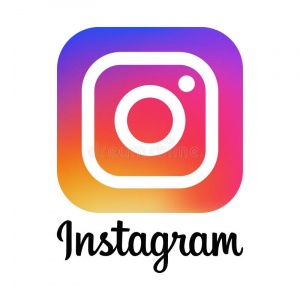Instagram Censorship
Instagram is a free photo and video sharing social media platform that allows users to connect with their followers or with a select group of friends. Its mission is “to capture and share the world’s moments.” [1] From small businesses to large institutions, news organizations to cultural hubs, celebrities, photographers, musicians, and influencers, Instagram allows its users to share parts of their life through posts, stories, short-form videos, live streaming, and direct messages. [2] You can create visual impressions through taking, editing, and publishing content, as well as interact with your content via likes, comments, shares, and saves. With an audience of more than one billion active users, Instagram has become one of the most popular social media platforms among millennials. Nearly 70% of its total population are under 35 years old. [3] Despite its strong presence, there have been continuous controversies regarding Instagram's decisions on censorship as well as the outcomes of its censorship. Its algorithm has come under fire for implementing racist decisions and double standards.
Contents
Background
Instagram was developed in San Francisco and launched in 2010 by Kevin Systrom and Mike Krieger. Taking only eight weeks for software engineers to develop, Instagram gained attraction rapidly. Its simple interface and easy-to-use features made it widely popular. In less than two years, Meta (formerly Facebook) acquired the company for $1 billion in cash and stock. [4] While user growth has continued to increase since the Meta acquisition, the platform has several ethical concerns over censorship. Over the years, questions about who and what Instagram can and should censor were raised. From Instagram blaming its algorithm’s censoring of activists on a “technical bug” [5] to the rolling out of its “Sensitive Content Control,” [6] which allows users to set limits around how much potentially sensitive content they might see on their Explore page, the line between Instagram’s Community Guidelines and Recommendation Guidelines has become more ambiguous than it ever has been. Countries like China, Russia, Iran and Uganda have banned Instagram, temporarily or permanently. Instagram bans in these countries are largely due to the desire to censor information, especially during times of conflict, protest or uprising.
Features
- Stories
- Reels
- Messenger
- Videos
- Shopping
- Search & Explore
Ethical Implications
Instagram falls under frequent criticism for the way that it blocks or removes content on the platform. The site provides limited information about how it makes decisions about unacceptable content, leading to worries that the systems could be biased.
Censoring Sensitive Content
In 2021, Instagram launched "Sensitive Content Control," allowing users to choose how much or how little sensitive content to see in Explore from accounts they don't follow.
Censoring Political Speech
"abortion"
"Israeli-Palestinian conflict"
Banning Hashtags
Hashtags on Instagram may not be searchable if the text or the content associated with the hashtag consistently do not follow its Terms of Use or Community Guidelines. [7] Users can still tag their photos with them, but doing so is meaningless because no one will be able to search for them. [8] Hashtags are blocked in several different ways:
- Permanent blocks: for tags that are permanently blocked, they return to a 404 error page.
- New posts moderated: for tags that are only temporarily blocked, Instagram shows "top posts" but not "new posts".
- "No posts yet" error message: for some tags, Instagram simply says that there are no relevant photos.
- Content warning: for tags related to eating disorders, suicide or self-harm, and private sales of firearms, Instagram attaches a click-through content warning to them.
Some hashtags are banned permanently, while others are banned temporarily. Despite the list of banned hashtags changes from time to time, Instagram doesn't publish a constantly-updated list. Additionally, with no direct information from Instagram and little consistency in which tags are blocked, it is difficult for users to navigate what Instagram is doing and why. The overview of Instagram's currently banned tags doesn't make the app look LGBT- or woman- friendly. With certain feminism- and identity-centered hashtags banned, some argue that Instagram is censoring women and the LGBT community. According to an Instagram spokesperson, "the community abused them, uploading nude and sexual content that defied Instagram’s content rules and tagging it with terms like #curvy, #goddess, and other words that aren’t typically associated with porn." [9] Ultimately, the tags were restored.
Censoring COVID-19
References
- ↑ https://about.instagram.com/
- ↑ https://www.businessinsider.com/guides/tech/what-is-instagram-how-to-use-guide
- ↑ https://www.socialpilot.co/instagram-marketing/instagram-stats#:~:text=Instagram%20has%20over%201.22%20billion,25.31%20%25%20of%20the%20world's%20population.
- ↑ https://www.investopedia.com/articles/investing/102615/story-instagram-rise-1-photo0sharing-app.asp
- ↑ https://theconversation.com/beyond-a-technical-bug-biased-algorithms-and-moderation-are-censoring-activists-on-social-media-160669
- ↑ https://about.fb.com/news/2021/07/introducing-sensitive-content-control/
- ↑ https://help.instagram.com/485240378261318
- ↑ https://www.businessinsider.com/banned-instagram-hashtags-2013-8#ixzz2k4Eh7M1X
- ↑ https://www.dailydot.com/irl/instagram-list-of-banned-tags-weird/
